New way of administering medicine may eliminate the need for needles
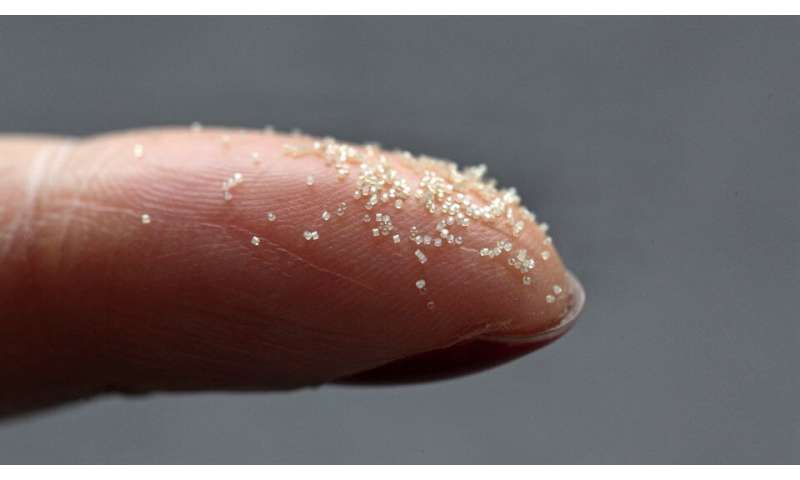
It is almost like being struck by lightning twice: It is possible, but the probability is infinitely small. Nevertheless, DTU Professor Anja Boisen has now twice been awarded the prestigious research grant ERC Advanced Grant to conduct groundbreaking elite research
She is one of only a small handful of researchers in Denmark and only the second researcher at DTU to have achieved this distinction.
She received the grant of approximately DKK 18.5 million in April and will use it to find the ideal way to protect the active substances in medicine until they reach the right place in the patient's intestine and attach to the intestinal wall, from where the active substances are guided into the body.
However, the research project does not target just any type of medicine.
Anja Boisen has set about designing a so-called drug delivery system for oral ingestion of insulin, which is a large and fragile molecule: It is broken down by gastric juices and intestinal enzymes—and it cannot penetrate the intestinal wall by itself.
"So, if you don't protect it all the way to the intestinal wall, it will break apart. And even if you guide it all the way there, it still needs help to penetrate the intestinal wall," she explains.
Building on a good idea
Anja Boisen's team of researchers has previously had great success in creating tiny containers—smaller than grains of sand—out of harmless medical plastic (polymer) to protect, for example, probiotics, which are bacteria that benefit the gut.
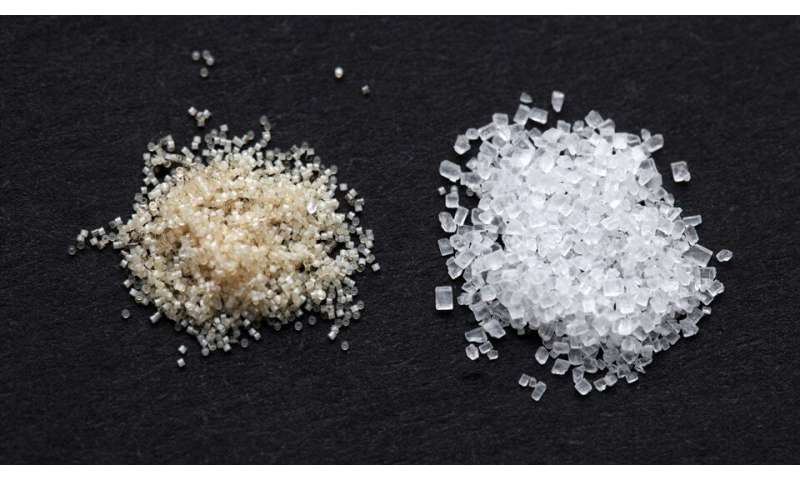
The containers—which are equipped with a polymer lid—are assembled in a capsule which dissolves on its way through the body. When the containers are free of the capsule, changes in pH or interaction with molecules in the surroundings causes the lid to dissolve, thus releasing the active substances.
Tests have shown that Anja Boisen and her team cannot simply copy the container design from previous projects for delivery of insulin, because the small containers do not get close enough to the intestinal wall. A new drug delivery system for insulin must therefore be designed.
The containers won't simply be put into the capsule. The idea is to incorporate them in a foil that looks almost like bubble wrap. The foil will then be rolled up and put in a capsule.
The foil will struggle to return to its flat form. So, when the large capsule dissolves, the foil will unfold and press itself up against the intestinal wall, after which the insulin will be released. The team of researchers will try to develop the design that best enables the foil to stay in the intestine long enough and get completely close to the intestinal wall.
"We may be able to come up with a better idea than just a simple foil. It may need to be a more advanced 3D figure of some kind with tentacles sticking out," says Anja Boisen.
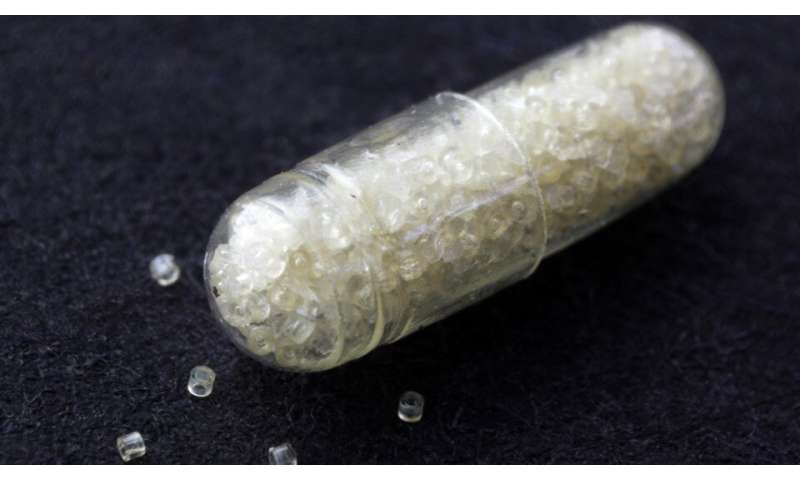
"Studies show that some types of foil cause intestinal cells to use a lot of energy to cling to the foil—and while they are doing so, small openings are created in the intestinal wall that allow the medicine to slip through. You can also use chemicals to open the cell wall so that the medicine can penetrate," she explains and continues:
"However, it's important that we are sure there are no side effects to the solutions we invent because there is obviously a reason why we have an intestinal wall. For example, bacteria should not be allowed to pass over to the wrong side."
Other applications
Anja Boisen is fully aware of the amount of work that lies ahead of her and her team before they can fulfill the ambition of the new ERC project—but the reward if they reach their goal makes her excited: "Imagine if you could just take your insulin as a pill instead of having to stick yourself with a needle."
Although the focus is on insulin, the technology—once developed—will also be transferable to, for example, the development of vaccines that can be given as capsules.
-
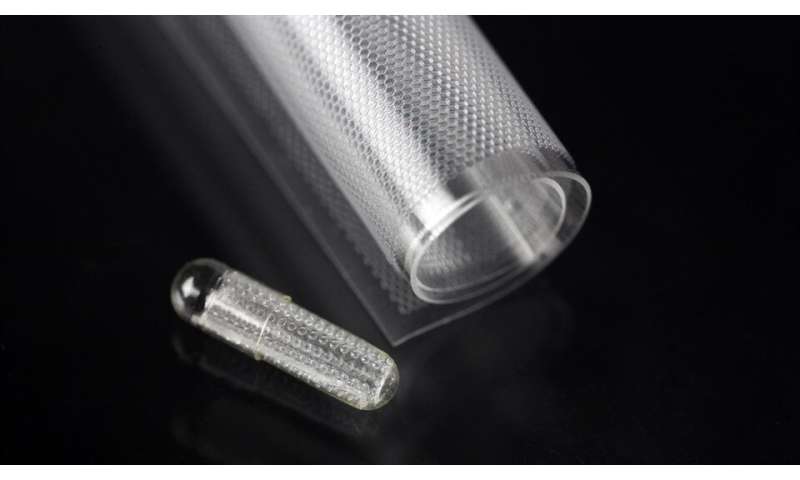
The aim of the new ERC project is to design the ideal capsule for oral administration of insulin. The plan is to incorporate the microcontainers in a bubblewrap-like foil. Credit: Jesper Scheel -
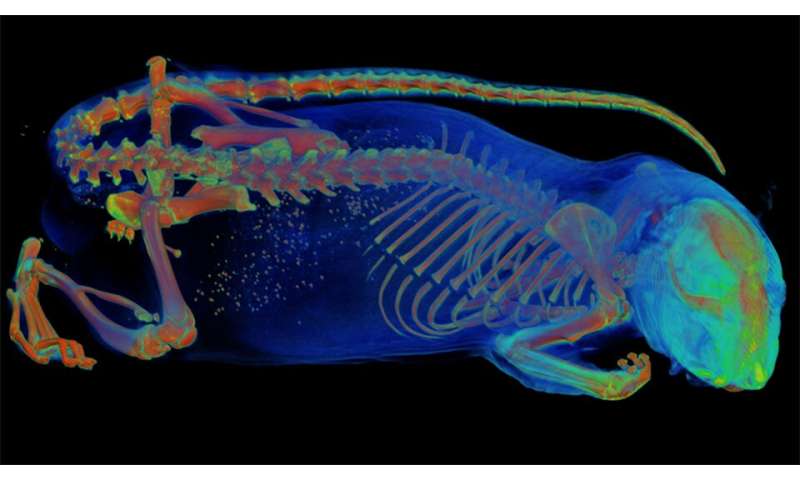
Studies will show how the medicine-filled microcontainers and foils make their way through the body of e.g., a rat. Credit: Rolf Bech Kjeldsen
"You will then be able to take a capsule instead of, for example, having to wait in line to receive your third or fourth COVID-19 vaccine," explains the professor.
Vaccines in capsule form will also be a game changer in terms of availability because—unlike many traditional vaccines—they do not have to be stored at super-cold temperatures. It will also counter the reuse of needles in areas where there aren't enough to use a new needle for each dosage.
Good things take time
In connection with her first Advanced Grant project, Anja Boisen succeeded in applying for and being awarded three proof-of-concept grants from ERC. "They give you an opportunity to try out some things and to hire a slightly different profile than a researcher to look at the question: Can this be turned into a business or something commercial? Because that is what it takes for something to be of benefit," explains the professor.
And—in this case—the money was well spent: The three additional ERC grants have led to Anja Boisen's team setting up two spinouts: BluSense Diagnostics and LightNovo.
Historically, there is a very long way to the market for drug delivery systems and medical devices. For the time being, Anja Boisen and her team have five years to achieve their ambition to develop the new way of taking medicine. "And we're looking forward to getting started. It's a project with great perspectives and great challenges. Now we need to select the best team and test some of our many 'crazy' ideas," she says.
Provided by Technical University of Denmark